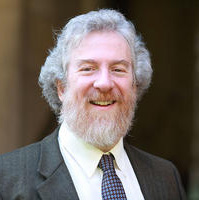Approaching Pesah, Part 2: Who Are the Children at the Seder?

Let me offer a few thoughts on the part of the seder that has continually enchanted me since I was a child. The Haggadah presents four “types” of children, labeling each and offering directives to the parents on how to respond to each type. This is based upon four verses in the Torah that instruct the Children of Israel to explain (to their children) the rituals of Pesah. The Haggadah assumes that if something is repeated four times, with different language, that there must be a reason: that there are different types of children, each needing a different response.
The section opens with the words “K’neged (concerning/against) four children, the Torah speaks,” with the word k’neged implying, at least in part, some critique of each child.
The hakham (wise) child asks about differing categories, different ways to structure and systematize all that happens, and parents are guided to give a full, exhaustive (exhausting?) analysis of all the relevant halakhot (laws) and texts. I have always felt a certain tongue-in-cheek quality to this response, almost as if to say, “You asked for it—here it is!—all the facts at full length.” But there is no emotional/spiritual connection with this voluminous material.
The rasha (wicked) child famously asks, “What is this service to you (lakhem)?” The question of the hakham is useless without the added experiential aspect brought by the so-called rasha. The rituals (with all the academic analysis) are only meaningful if they mean something to the people engaged in the ritual. This child wants to have his or her teeth set on edge, for that is, in fact, a sign of being emotionally and spiritually present. More than anything, at your seder tell your children, your friends, your companions what this does mean for you.
The tam (simple) child might be the deepest of all. For the same Hebrew root is applied (Psalm 19) to the Torah: “Torat Adonai temimah” (The Torah of God is perfect!). The ability to ask the shortest question, “Mah zot?” (What is this?), may be the most profound: it invites the widest response and offers the chance to respond with what matters most to the person answering.
Sometimes there is no way to put the inner question into words; we have all been in situations where we don’t know enough to ask anything at all. The fourth child, who does not ask, need not be too young to talk, but represents those who cannot find their own voice, who cannot frame their own question. The challenge then for Jewish ritual in our times is to open the conversation with all present, with enough depth for the sophisticated, enough soul for the spiritually curious, and enough understanding and welcome for those who don’t know enough (or feel comfortable enough) to ask questions.
In truth, we all have a little of each of these children within us, and the seder invites us all to explore not simply “our inner child,” but “our inner four children.” I hope the explorations are joyous, deep, and fulfilling at all the seders where you are gathered.
As always, I am interested to hear comments and reflections on these thoughts about prayer and liturgy. You may reach me at sabarth@jtsa.edu.



